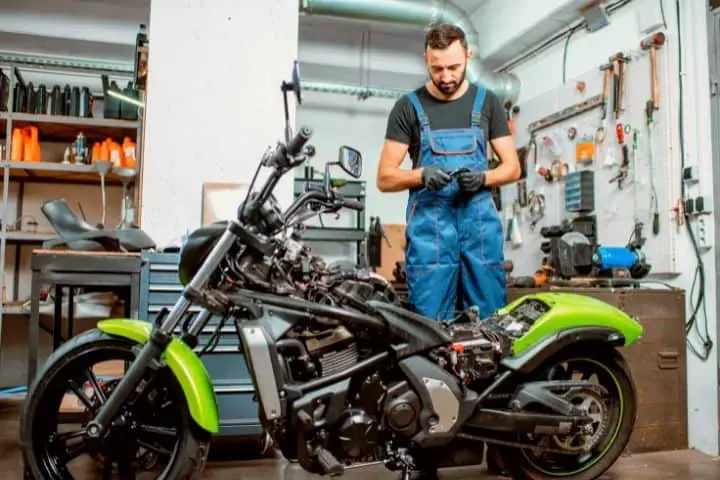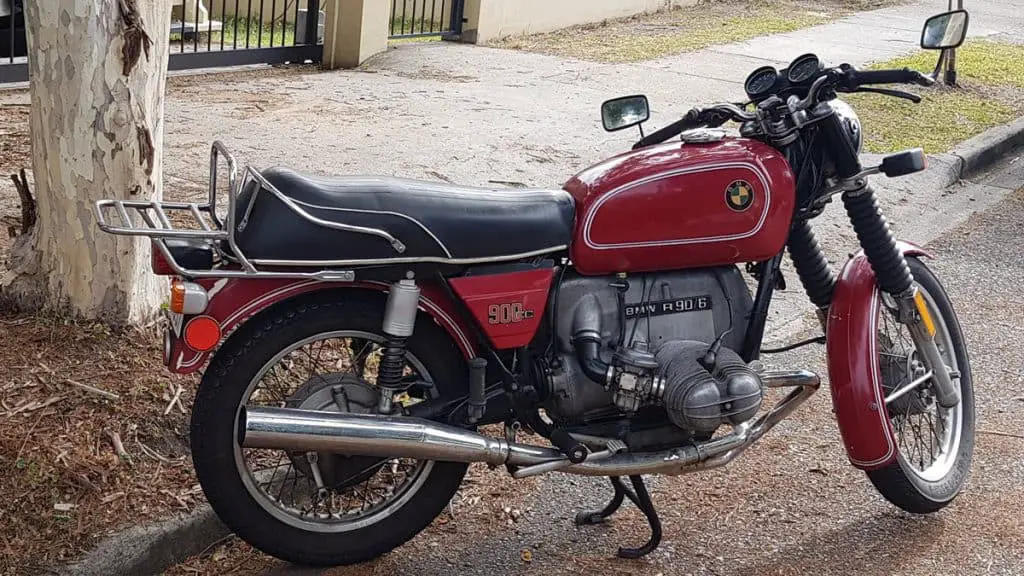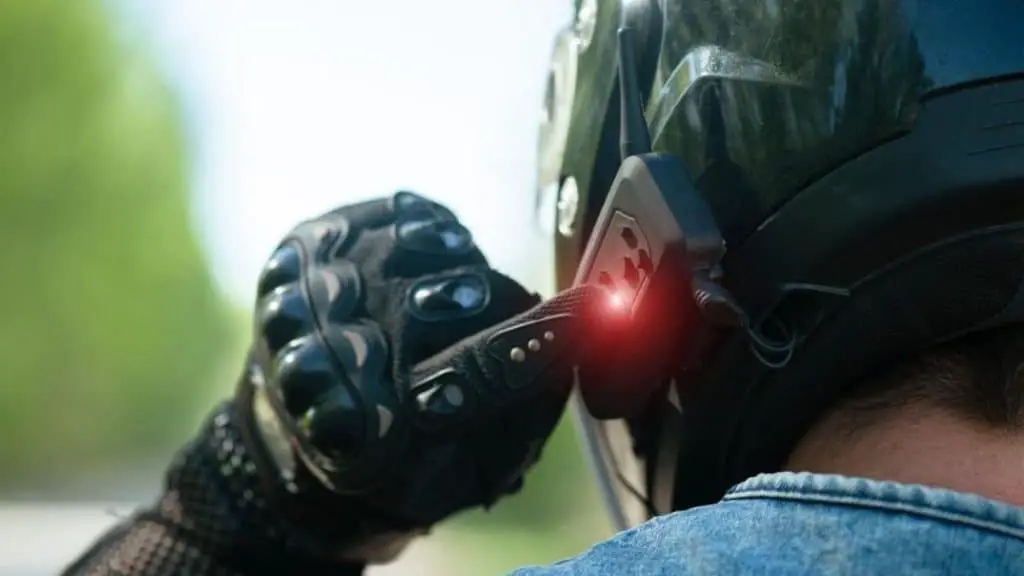2 Stroke Break In: A Look Beyond This Engine Controversy (+ 2 Best Methods)
To be honest, the concept of engine break-in in a motorcycle is a controversial topic.
And one of the prime reasons for that is TONS of misinformation that’s available all over the net.
I agree that this is nowhere as controversial as some of the important philosophical questions of life. For example: What came first? The chicken or the egg? (I dare you to answer this one. What’s the best pizza topping?)
But if you own a 2 stroke dirt bike, you might want to know what exactly is the truth.
It’s time to dig up the truth about the 2 stroke engine break-in myths.
Do You Need to Break in a 2-Stroke Dirt Bike (Pros & Cons)

If you have bought a spanking new dirt bike, or rebuilt an old one, breaking in the engine is one aspect that you need to consider.
And this is where things get confusing.
There are a whole lot of techniques (each of which claims to be the only proper way to do it). Even manufacturers suggest their own methods in the manuals.
What’s more, there are plenty of experts who will tell you that all this is just a pile of nonsense.
As per them, riding the bike normally right from the start is good enough to ensure the right 2 stroke cylinder break-in.
So, which is the correct way to go?
Admittedly, there are some valid points in both school of thoughts.
Before the age of precision-based, computer controlled manufacturing techniques, the exact dimensions of small engine components were not well controlled. But today, these parts are highly fine-tuned to ensure uniformity between the matching parts.
When you press the throttle on your 2-stroke engine without any break-in, chances are the bike will take it like a champ.
But, think about this…
When it comes to mechanical components, there’s no guarantee that nothing will go wrong.
Agreed, there are racers who rebuild motors and test them out right there on the track. But racing engines aren’t designed to deliver years of reliable service.

Imagine a component breaking off when you’re hitting the pushing the new bike to its limits on the very first day. And that goes for engine rebuilds as well.
Still, if you live by the motto “conquer or be conquered”, you can skip the break-in process. At the end of the day, it’s your personal decision.
Admittedly, assembly standards are super high in most manufacturing centers. But some things might slip past the eyes of the quality control team.
And at the microscopic level, there are rough surfaces that need to be smoothed out before stressing the engine.
Honestly, how many of us ride a new dirt bike like a screaming eagle right after we have bought it?
Personally, I wouldn’t risk it after having spent money and effort on the bike.
Long story short…
Riding your new bike hard before the engine is broken-in properly, isn’t the best idea. In other words, over-revving or stressing the engine is not the correct way to break-in the engine.
When it comes to sensitive components like cylinder bores, valve seats, and piston rings, it’s best to go easy on them in the initial stage. It will make a difference in the performance of the engine in the long run and reliability.
And let’s admit it.
It’s not just the engine that needs break-in. The new tires, breaks, and gears need to settle down too. Most importantly, you need some time to get familiar with the bike before revving off like a lightning bolt.
The Right 2 Stroke Break in Procedure: 2 Methods
Let me make this clear. There’s no need to be overly cautious about the 2 stroke engine break-in period. But you shouldn’t push it to the extreme either.
To be honest, the choice of break-in process for a 2-stroke motorcycle isn’t so important. The most important thing is avoiding extremes and giving the components the right time to get warmed up.
Method 1
The easiest and the best way to break in a 2 stroke engine is to follow the instructions given by the manufacturer. They are the best ones to know what exactly are the demands of the mating components in a specific engine.
In most cases, the main point of contention for a 2 stroke break-in process is the seal between the piston rings and the cylinder. Suffice to say, If you patiently follow the owner’s instructions, you need not worry about 2 stroke piston ring break-in procedure.
Generally, manufacturers mention a rev range for a specific period during which you shouldn’t use the full throttle or push the engine hard. Some experts suggest that you should go up to 60% of the engine’s top speed limit during this period. But that can very depend on the type of bike.
Other than that, aggressive starts, hard stops, or rapid acceleration should be avoided at this stage.
Method 2
If you have done some research on the topic, you must have come across the term “three heat cycles”.
This is a simple but effective process to break in the engine. In fact, you can easily do it in your garage.
All you need to do is turn the engine on and let it idle for around 10 minutes. Give it a few revs in between. Then shut it down and allow it to cool. Repeat the whole process three times.
There are various versions of this process that bikers follow. Many riders take the bike out for a ride instead of idling during the second and third cycles.

Some stretch the third cycle longer by riding for 20 to 30 minutes. They also vary the throttle between idle and half throttle during the ride.
Note, this process is used for rebuilt engines as well. For a rebuilt motor, you can also check for any loose components after the first run.
Other than that, some users also dump the engine oil after the process of a 2 stroke engine break-in. The bike is then filled with fresh lube oil.
The assembly line might be contaminated by small metal particles released from the new engine components or leftover from the manufacturing process.
So draining out the 2 stroke break-in oil mixture is a good idea.
And trust me, you don’t want these particles scratching the insides of the piston skirt or cylinder liner.
Now, you may say that most of these particles are collected in the oil filter. But changing the oil can be a cleaner option.
Frequently Asked Questions
How do you break in a 2 stroke motorcycle?
The best way to break-in a 2-stroke motorcycle is to follow the instructions provided by the manufacturer. Other than that, you can also use “heat cycles” to wear down the rough edges of the interior components, if any.
Is engine break-in necessary?
Yes, engine break-in is necessary for a 2 stroke dirt bike. It helps in keeping the sensitive components on the engine and other components of the motorcycle in the best condition for longer periods. In addition, it also helps you to get familiar with the bike.
How long does it take to break-in an engine?
The break-in period of a two stroke engine varies from bike to bike. It’s best to follow the manufacturer’s instructions. Generally, it can be between 350 to 500 kilometres in terms of distance.






